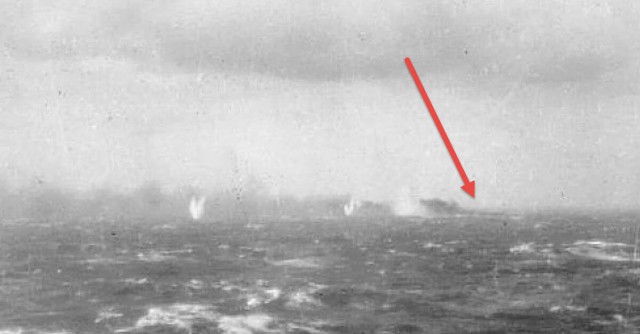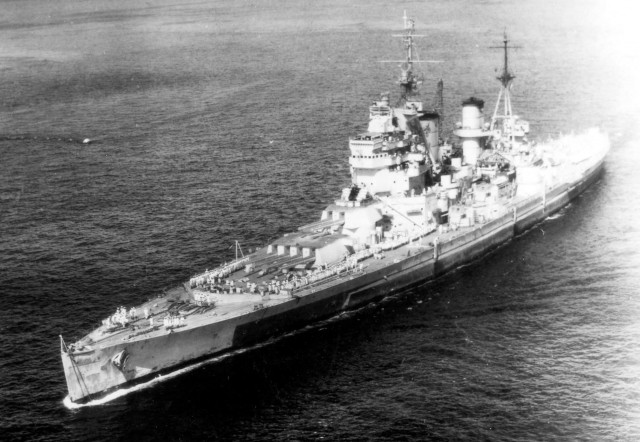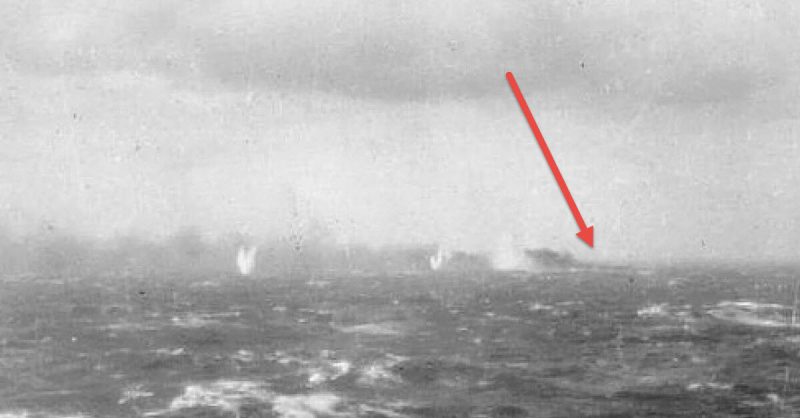
William Herbert (Bert) Millener recently died on his 103rd birthday. He was one of the last remaining veterans of the gun turrets that helped sink the Bismarck. He was a Royal Marine who was on board the battleship HMS King George V when the ship helped sink the German Bismarck in May of 1941.
Three years ago on his 100th birthday, he attended a Royal Marines band concert as the guest of honor. During his speech, he recalled going after the Bismarck. He told people the reason behind the revenge was that the Germans had taken down the battle cruiser, Hood.
He also recalled having terrible claustrophobia while working the gun turrets. He recalls that once he was in the turret there was no way to get out until someone opened the doors from the outside. But he said he knew he had a job to do, and that’s all he focused on.
What made him uneasy, though, is that when they did sink the ships he couldn’t help thinking about the men on the enemy ships. He put himself in their shoes and thought about the men’s families and lives outside of the war.
What is interesting is that Millener should have never been on the ship that day. He was sent to the hospital with pneumonia, and after being discharged he was supposed to go back to the barracks. However, the order was suddenly countermanded.

The battle was a sequel to the Battle of the Denmark Strait, fought on 24 May 1941, in which Bismarck and the heavy cruiser Prinz Eugen sank the British battlecruiser HMS Hood and damaged the battleship Prince of Wales, which withdrew due to the malfunctioning of her main armament.
Following that battle Bismarck was pursued for more than two days by ships and aircraft of the Royal Navy and Royal Air Force. Eventually, on the evening of 26 May, her steering gear was crippled by a torpedo bomber attack, and on the following morning she was brought to battle, crippled and scuttled by her crew.
Dorsetshire and Maori attempted to rescue survivors, but a U-boat alarm caused them to leave the scene after having rescued only 110 Bismarck sailors, abandoning the majority of Bismarck ‘ s 2,200-man crew to the mercy of the water. The next morning, U-74, dispatched to try to rescue Bismarck’s logbook (and which heard sinking noises from a distance), picked up three survivors and the German weather ship Sachsenwald picked up two survivors.
After the battle, the British warships returned to the United Kingdom with 111 Bismarck survivors. One died later of his wounds. After a period of interrogation and processing, the survivors spent the rest of the war as prisoners. No British ship was sunk during this action, but the destroyer HMS Mashona was sunk by the Luftwaffe during the subsequent withdrawal the following day.
Millener was born on November 17, 1912. He was the son of a trawler skipper and worked with his father and uncle until he joined the Marines in November 1929.
Millener was posted to the barracks in Portsmouth and completed his training there in February 1931. He then married his wife in 1940 and just shortly after that was assigned to the HMS King George V.
